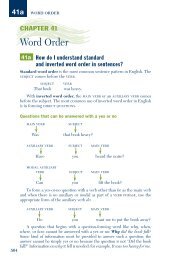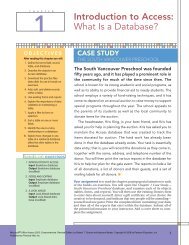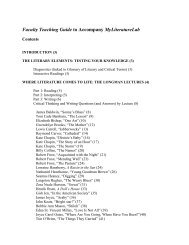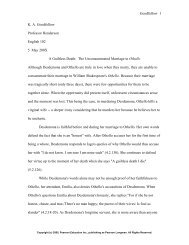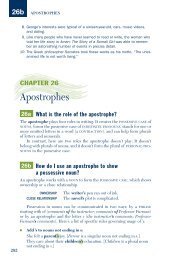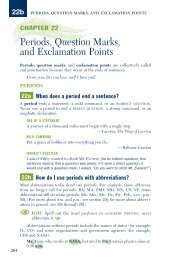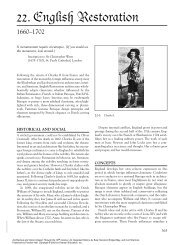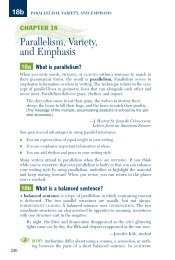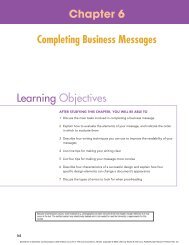JavaScript/JScript: Control Structures I - Pearson Learning Solutions
JavaScript/JScript: Control Structures I - Pearson Learning Solutions
JavaScript/JScript: Control Structures I - Pearson Learning Solutions
You also want an ePaper? Increase the reach of your titles
YUMPU automatically turns print PDFs into web optimized ePapers that Google loves.
2008934301<br />
Chapter 14 <strong>JavaScript</strong>/<strong>JScript</strong>: <strong>Control</strong> <strong>Structures</strong> I 423<br />
3. Display a summary of the test results indicating the number of students who passed and the<br />
number of students who failed.<br />
4. If more than 8 students passed the exam, print the message “Raise tuition.”<br />
After reading the problem statement carefully, we make the following observations about<br />
the problem:<br />
1. The program must process test results for 10 students. A counter-controlled loop<br />
will be used.<br />
2. Each test result is a number—either a 1 or a 2. Each time the program reads a test<br />
result, the program must determine whether the number is a 1 or a 2. We test for<br />
a 1 in our algorithm. If the number is not a 1, we assume that it is a 2. (An exercise<br />
at the end of the chapter considers the consequences of this assumption.)<br />
3. Two counters are used to keep track of the exam results—one to count the number<br />
of students who passed the exam, and one to count the number of students who<br />
failed the exam.<br />
4. After the program has processed all the results, it must decide whether more than<br />
eight students passed the exam.<br />
Let us proceed with top-down, stepwise refinement. We begin with a pseudocode representation<br />
of the top:<br />
Analyze exam results and decide if tuition should be raised<br />
Once again, it is important to emphasize that the top is a complete representation of the program<br />
but that several refinements are likely to be needed before the pseudocode can be naturally<br />
evolved into a <strong>JavaScript</strong> program. Our first refinement is<br />
Initialize variables<br />
Input the ten exam grades and count passes and failures<br />
Print a summary of the exam results and decide whether tuition should be raised<br />
Here, too, even though we have a complete representation of the entire program, further refinement<br />
is necessary. We now commit to specific variables. Counters are needed to record<br />
the passes and failures, a counter will be used to control the looping process and a variable<br />
is needed to store the user input. The pseudocode statement<br />
Initialize variables<br />
may be refined as follows:<br />
Initialize passes to zero<br />
Initialize failures to zero<br />
Initialize student to one<br />
Notice that only the counters for the number of passes, number of failures and number of<br />
students are initialized. The pseudocode statement<br />
Input the ten quiz grades and count passes and failures<br />
requires a loop that successively inputs the result of each exam. Here it is known in advance<br />
that there are precisely 10 exam results, so counter-controlled looping is appropriate. Inside<br />
the loop (nested within the loop), a double-selection structure will determine whether each<br />
e-Business and e-Commerce: How to Program, by Harvey M. Deitel, Paul J. Deitel, and Tem R. Nieto. Published by Prentice Hall.<br />
Copyright © 2001 by <strong>Pearson</strong> Education, Inc.




